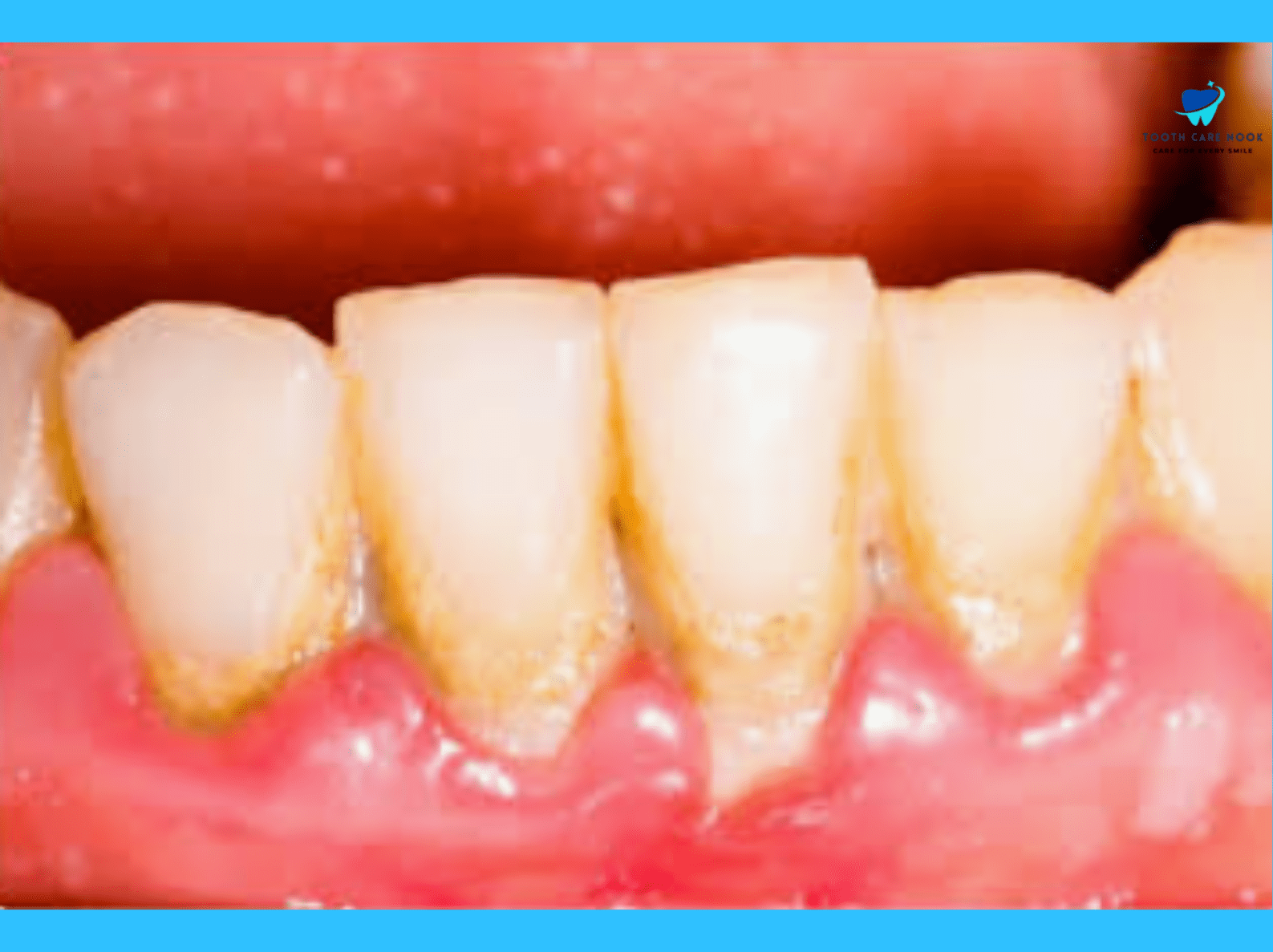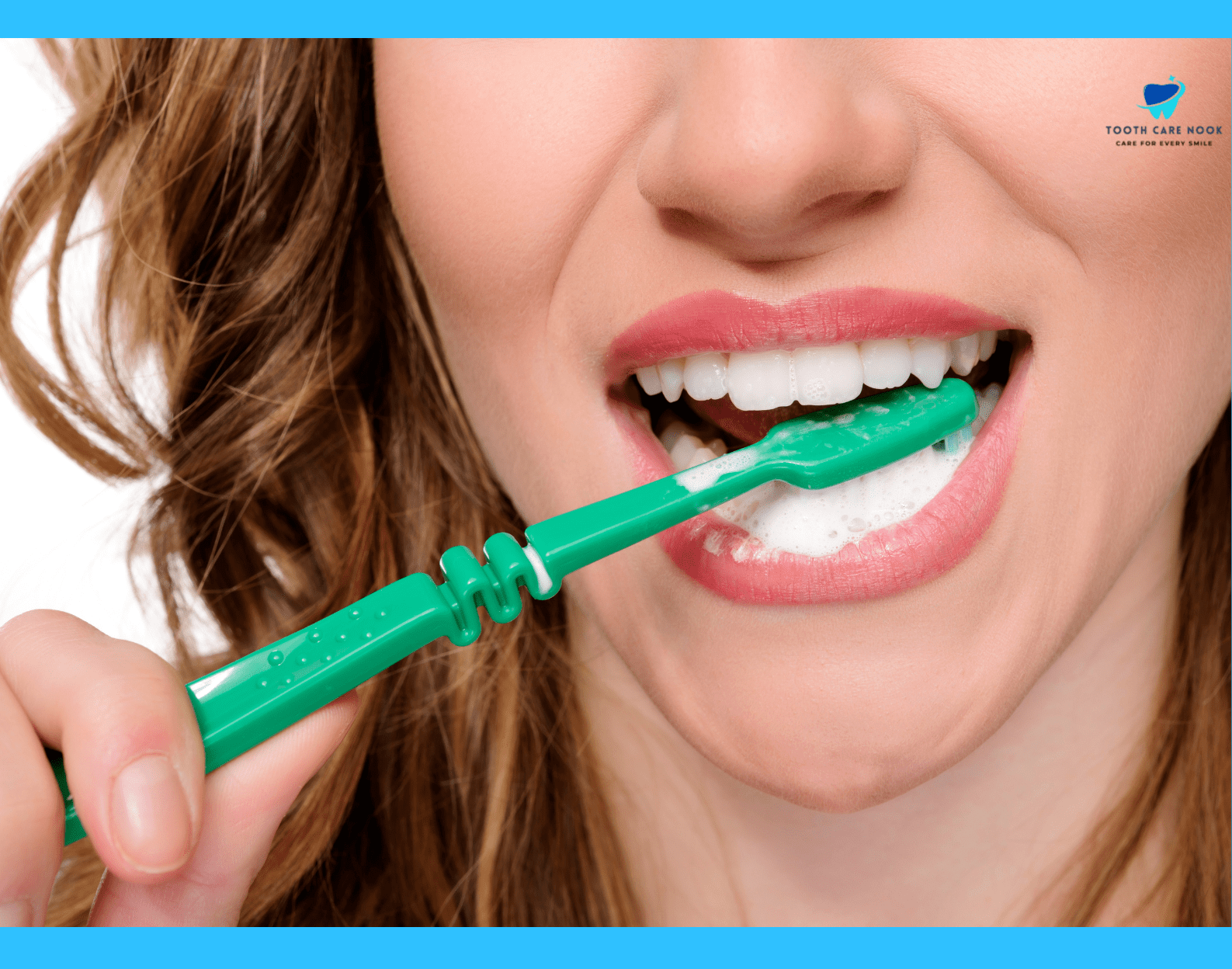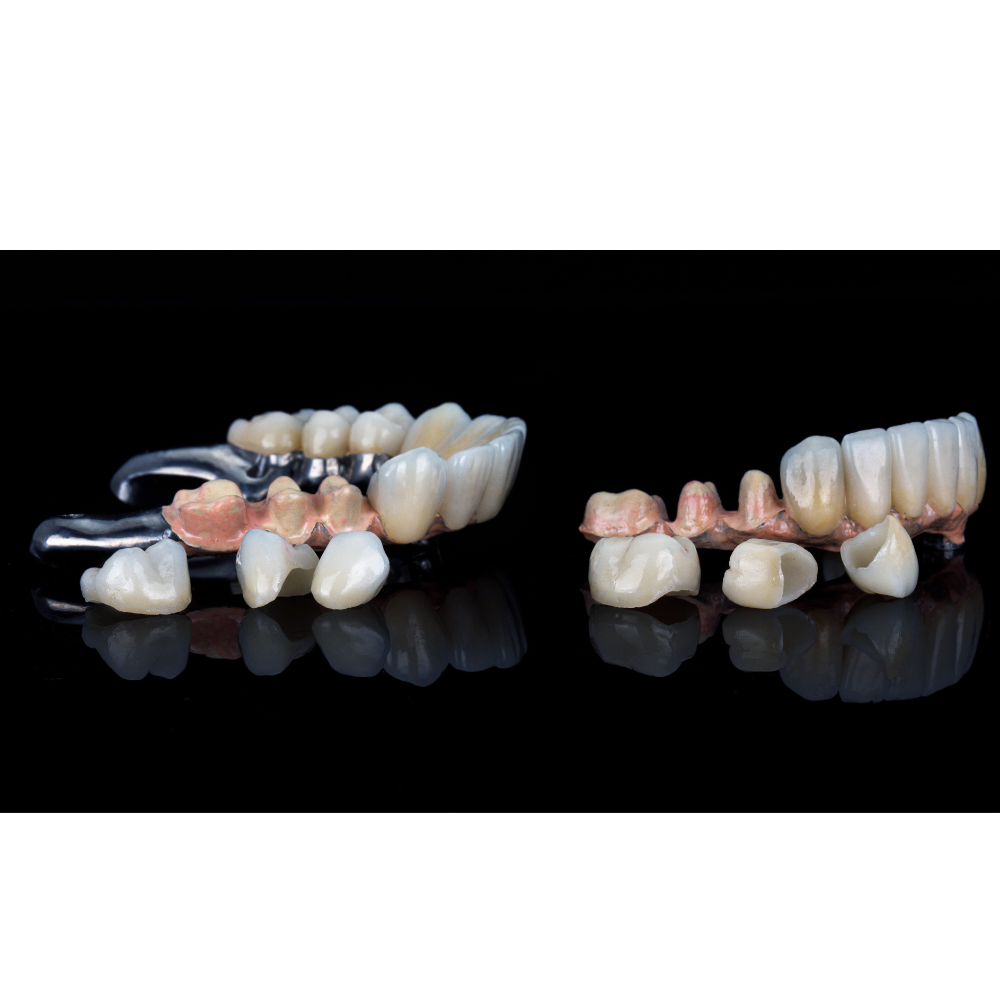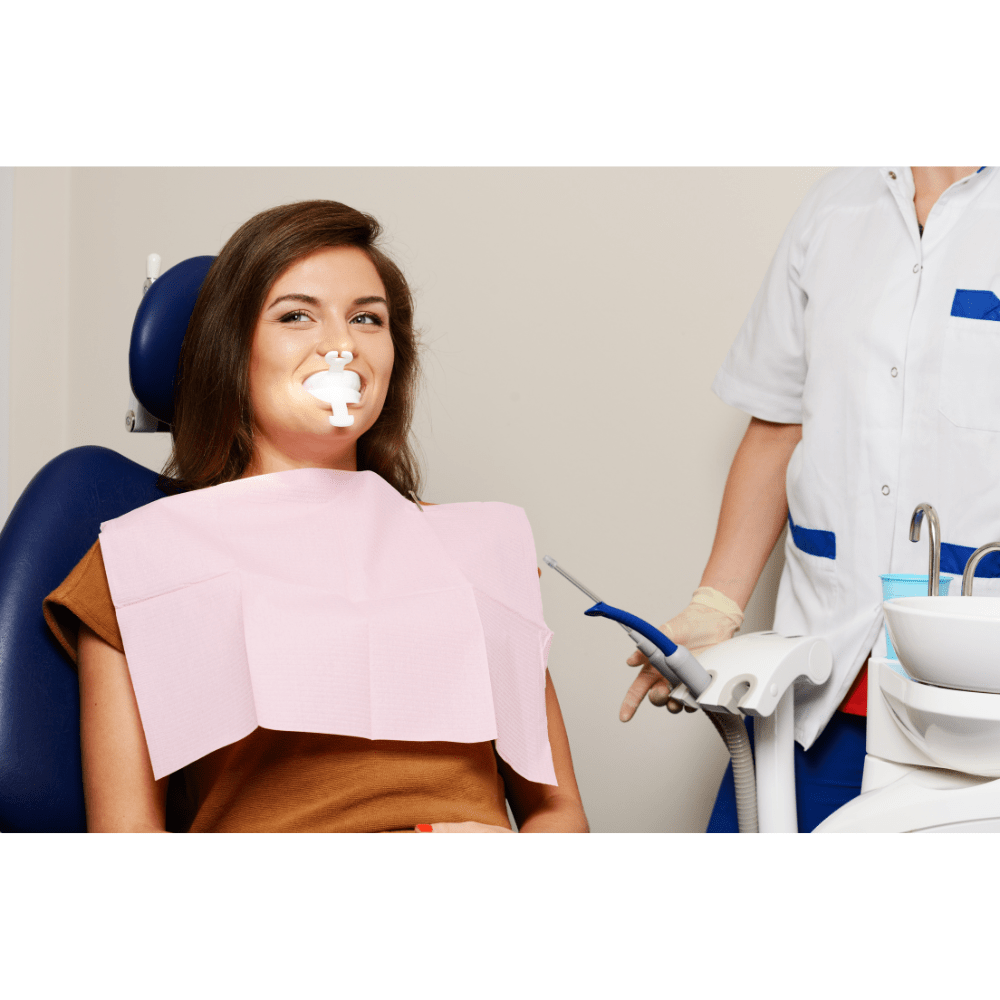All You Need To Know About Tartar Breaking Off Teeth
The tartar breaking off teeth is a cause for concern. Tartar hardens on the teeth and can cause various issues if not managed properly. When pieces of tartar break off, it might be a sign that your oral hygiene routine needs attention or that there are existing dental problems that require professional care.
In this article, we will talk about causes and solutions for tartar buildup. Plaque and tartar are often considered the same thing but they are different. Let’s first discuss the differences between plaque and tartar.
Differences Between Plaque Vs Tartar Teeth
| Plaque | Tartar |
| Plaque is a soft, sticky film of bacteria | Hard, mineralized deposits on teeth |
| Soft and flexible texture | Hard and rough |
| Develops from bacteria and food debris | Forms when plaque is not removed and hardens |
| Plaque Can be removed by brushing and flossing | Requires professional dental cleaning |
| Can lead to cavities and gum disease | Can exacerbate cavities, gum |
| Plaque is transparent to white | On the other hand, tartar is Yellowish to brown |
Causes Of Tartar Breaking Off Teeth
Tartar breaking off teeth can occur due to the following factors:
Poor Oral Hygiene:
Inadequate brushing and flossing lead to tartar buildup, which can become brittle and detach from teeth.
Hard Foods:
Chewing on hard foods or objects can put pressure on tartar deposits, causing them to break off.
Dental Work:
Certain dental procedures or treatments may inadvertently dislodge tartar from teeth.
Natural Wear:
Over time, natural wear and tear can cause tartar to break away from teeth, especially if it’s already loose or weakened.
Gum Disease:
Advanced gum disease can weaken the attachment of tartar to teeth, leading to its detachment.

Is Tartar Breaking Off A Good Sign?
Tartar breaking off teeth is not considered a good sign. While it might indicate the removal of some buildup, it often means there is a significant accumulation of tartar on your teeth that needs professional attention. Tartar breaking off can expose areas that are more prone to decay and gum disease.
What Does Tartar Look Like When It Breaks Off?
When tartar breaks off, it often appears as small, hard, and yellowish to brownish pieces. These fragments can feel gritty and may be irregular in shape. They are harder than food particles and can be noticeably rough to the touch.
What To Do If Tartar Is Breaking Off Your Teeth?
Use Antiseptic Mouthwash:
Rinse with an antiseptic mouthwash to help reduce bacteria and prevent further tartar buildup.
Avoid Hard Foods:
Avoid chewing on hard foods or objects that can dislodge more tartar or damage your teeth.
Stay Hydrated:
Drink plenty of water to help wash away food particles and bacteria.
Quit Smoking:
If you smoke consider quitting as smoking can contribute to tartar buildup and gum disease.
Does Tartar Broke Off While Flossing?
Yes, tartar can break off while flossing especially if there is a significant buildup. Flossing can sometimes dislodge small pieces of tartar particularly from between teeth where it accumulates.
However, you should know that while flossing can help remove plaque, it is not effective at removing hardened tartar itself. If you notice pieces breaking off, it’s a sign that you should see a dentist for a professional cleaning to address the remaining tartar.
Did I Chip My Tooth Or Was It Plaque?
If you are trying to determine whether you chipped your tooth or if it was plaque, consider the following changes:
Chipped Tooth:
Appearance:
A chipped tooth will have a noticeable missing piece or a sharp, jagged edge. It can look like a crack or a break in the tooth structure.
Texture:
A chipped tooth feels sharp or rough to the tongue.
Sensation:
Chipping a tooth often causes pain or sensitivity, especially when eating or drinking something hot, cold, or sweet.
Location:
Typically, it occurs on the biting surface or edge of the tooth.
Plaque:
Appearance:
Plaque is a soft, sticky film usually transparent or pale yellow.
Texture:
Plaque feels soft and sticky and can be brushed or flossed away. Hardened plaque is rough and can break off into small, hard pieces.
Sensation:
Removing plaque or tartar usually does not cause pain but might cause slight discomfort if it affects the gums.
Location:
Found along the gumline and between teeth.
Does Tartar Cause Bad Breath?
Yes, tartar can cause bad breath. Tartar provides a surface for bacteria to thrive which can produce foul-smelling compounds. When tartar builds up on teeth, it can trap food particles and bacteria. This leads to an increase in bad breath. Also, tartar can cause gum inflammation and gum disease, both associated with persistent bad breath.
How To Prevent Tartar?
You can follow the below steps to prevent tartar buildup:
Brush Regularly:
Brush your teeth at least twice a day using fluoride toothpaste. Use a toothbrush with soft bristles to reach all areas of your mouth.
Floss Daily:
Floss between your teeth daily to remove plaque and food particles that brushing misses.
Eat a Balanced Diet:
Limit sugary and starchy foods that contribute to plaque buildup. Include foods that promote oral health, like fruits, vegetables, and dairy products.

Ways To Handle Tartar Breaking Off Teeth At Home
Baking Soda:
This can be used as a gentle abrasive to help remove surface stains, but it won’t tackle hardened tartar. Mix a small amount with water to form a paste and brush gently.
Saltwater Rinse:
This can help reduce inflammation and kill bacteria. Dissolve a teaspoon of salt in a glass of warm water and rinse your mouth.
Hydrogen Peroxide:
This can be used as a mouthwash to kill bacteria, but it should be diluted with water. Do not swallow.
Does Tartar Removal Hurt?
Tartar removal does not hurt, but some people may experience mild discomfort. The level of discomfort can depend on the amount of tartar buildup, the health of your gums, and your pain sensitivity.
Dentists often use local anesthesia or numbing gels to minimize any discomfort. If you have sensitive teeth or gums, inform your dentist beforehand so they can take appropriate measures to ensure your comfort during the procedure.
FAQs
Does Tartar Eat Away At Teeth?
No, tartar itself does not eat away at teeth, but it creates an environment where bacteria can thrive. These bacteria produce acids that erode tooth enamel, leading to cavities and tooth decay. Also, tartar can cause gum disease, which can further harm teeth and their supporting structures.
What Destroys Tartar?
Tartar can only be removed by professional dental cleanings. Dentists use special tools, such as scalers and ultrasonic devices, to break down and remove tartar. Good oral hygiene practices, like brushing twice a day with fluoride toothpaste and flossing daily, help prevent tartar formation.
Can Tartar Leave Gaps in Teeth?
Yes, tartar can contribute to gaps in teeth. As tartar builds up along the gumline, it can cause gum recession and periodontal disease. This can lead to the loss of gum tissue and bone, creating gaps between teeth and potentially causing teeth to become loose.
Why Do I Still Get Tartar Even Though I Floss?
Some people are more prone to tartar buildup. Consuming sugary or starchy foods also promotes plaque formation. The chemical makeup of your saliva can influence tartar formation.



